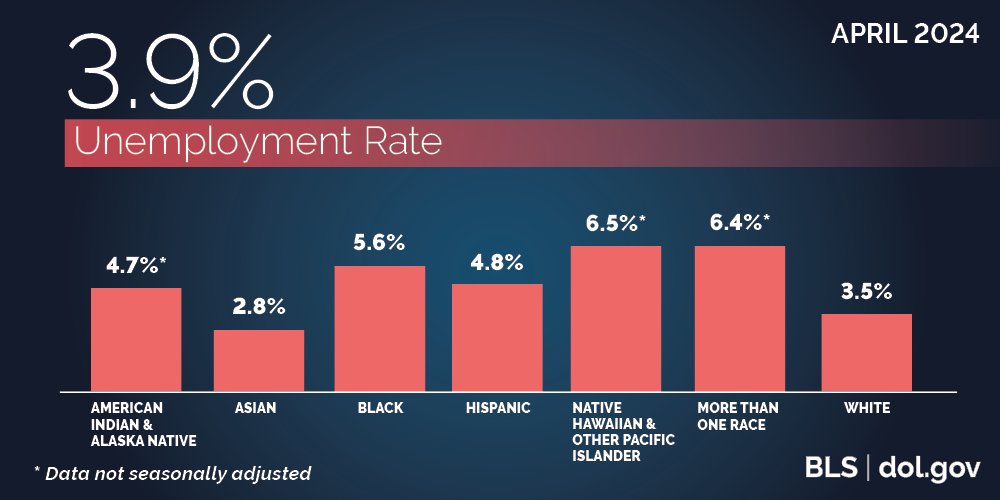
- U.S. EEOC Released Finalized Controversial Update to its Workplace Harassment Guidance
- New OFCCP AI Guidance Misstates Adverse Impact Law Portending Much Coming Friction with Federal Contractors
- U.S. Census Bureau Announced a Second Comment Opportunity Regarding Test Questions on Sexual Orientation & Gender Identity for ACS
- Tenth Circuit Upheld President Biden’s $15 Minimum Wage for Seasonal Recreation Services & Equipment Rental Federal Contractors
- OFCCP Acting Director Hodge Discussed Youth Apprenticeship Programs in US DOL Blog
- DE Talk Live | DE&I: Progress Amidst Opposition within Corporate, Political, & Social Spheres
- OSHA Expects to Publish Proposed Rule on National Heat Illness Standard “Later This Year,” Acting Secretary Su Testified Before House EW Committee
- JOLTS Report – Job Openings Decreased by 325k in March, Rate Decreased to 5.1%
- GAO Found OMB/DOL Did Not Have to Send Memo on Labor Advisors to Congress Before It Could Take Effect
- U.S. Economy Added 175k Jobs in February, Unemployment Rate Held Steady at 3.9%
- In Brief
- Looking Ahead: Upcoming Date Reminders
Monday, April 29, 2024: U.S. EEOC Released Finalized Controversial Update to its Workplace Harassment Guidance
New Asserted Protections for Contraception, Abortion Decisions, Sexual Orientation & Gender Identity (Including Pronouns & Bathroom Use) Spark Controversy

The new guidance does not have the binding legal force and effect of law.
The EEOC’s press statement also reports that:
“Between fiscal years 2016 and 2023, more than a third of all discrimination charges received by the EEOC included an allegation of harassment based on race, sex, disability, or another characteristic covered by the laws enforced by the agency. Also, since fiscal year 2018, harassment has been alleged in over half of federal sector equal employment opportunity complaints. In addition, among the 143 merits lawsuits that the Commission filed in fiscal year 2023, approximately 35% of those cases included an allegation of harassment.”
Along with the final guidance, the EEOC issued a “Summary of Key Provisions,” a document for employees, and a fact sheet for small businesses.
Newly Announced Protections Include Contraception & Abortion Decisions, Sexual Orientation & Gender Identity (Including Pronouns & Bathroom Use)
Section II.A of the guidance provides that covered bases for prohibited harassment include: Race, Color, National Origin, Religion, Sex (which encompasses Harassing Conduct of a Sexualized Nature or Otherwise Based on Sex, Pregnancy, Childbirth, or Related Medical Conditions Under Title VII, and Sexual Orientation and Gender Identity), Age, Disability, Genetic Information, Retaliation, and Cross-Bases Issues.
As to pregnancy, childbirth, or related medical conditions, the guidance states that:
“This can include issues such as lactation; using or not using contraception; or deciding to have, or not to have, an abortion.” [citations omitted]
Regarding sexual orientation and gender identity, the guidance provides that:
“… sex-based harassment includes harassment based on sexual orientation or gender identity, including how that identity is expressed. Harassing conduct based on sexual orientation or gender identity includes epithets regarding sexual orientation or gender identity; physical assault due to sexual orientation or gender identity; outing (disclosure of an individual’s sexual orientation or gender identity without permission); harassing conduct because an individual does not present in a manner that would stereotypically be associated with that person’s sex; repeated and intentional use of a name or pronoun inconsistent with the individual’s known gender identity (misgendering); or the denial of access to a bathroom or other sex-segregated facility consistent with the individual’s gender identity.” [citations omitted]
Balancing Anti-Harassment & Accommodation Obligations with Respect to Religious Expression
The updated guidances states [at Section IV(C)(3)(b)(ii)(b), Item (7)]:
“Special considerations when balancing anti-harassment and accommodation obligations with respect to religious expression: Title VII requires that employers accommodate employees’ sincerely held religious beliefs, practices, and observances unless doing so would impose an undue hardship. Employers also are responsible for protecting workers against unlawful harassment, including harassment motivated by religion or created by religious expression. To address these dual obligations, an employer should accommodate an employee’s sincerely held religious practice of engaging in religious expression in the workplace, unless doing so would create, or reasonably threatens to create a hostile work environment. Thus, while an employer may need to provide a religious accommodation that disrupts “[c]omplete harmony in the workplace,” the employer should take corrective action to address religious expression that creates, or threatens to create, a hostile work environment, or otherwise would result in undue hardship. As with other forms of harassment, an employer should take corrective action before the conduct becomes sufficiently severe or pervasive to create a hostile work environment.” [citations omitted]
Editor’s Note: This Commission conclusion exalts the rights of LGBTQ employees over the rights of employees holding religious objections to LGBTQ practices. Litigation will certainly ensue over this Commission position which seeks to resolve this collision of two different rights Title VII simultaneously protects.
How We Got Here
On September 29, 2023, the EEOC announced its proposed version of the updated guidance (see our story here). On October 2, the agency published a Federal Register notice requesting public comment. The public comment period on the proposed version closed on November 1, 2023, with over 38,100 comments submitted. The finalized guidance contains an “Addendum Pursuant to 29 C.F.R. § 1695.6(c) on EEOC Responses to Major Comments Received on the Proposed Enforcement Guidance on Harassment in the Workplace.” The Commission submitted its finalized update to the White House Office of Management and Budget (“OMB”) for review on March 4, 2024, and the OMB approved it on April 29.
Commission Votes
The EEOC announcement on April 29 stated that the finalized update was “approved by a majority vote of the Commission.” Currently, the Commission’s webpage listing how each Commissioner voted on specific items only runs through March 2024. However, Bloomberg reported that it “was approved by a 3-2 vote on party lines on April 25, according to a person with direct knowledge of the matter.”
Commissioner Statements
Four of the five Commissioners issued statements on the Final Rule.
The Commission’s press release contained Chair Charlotte Burrows’ (D) take in support. “Harassment, both in-person and online, remains a serious issue in America’s workplaces. The EEOC’s updated guidance on harassment is a comprehensive resource that brings together best practices for preventing and remedying harassment and clarifies recent developments in the law,” Chair Burrows said.
Vice Chair Jocelyn Samuels’ (D) statement in favor said in part: “EEOC’s updated Enforcement Guidance on Harassment explains the latest legal developments, clarifies the applicable legal standards, and addresses the complex and evolving ways in which harassment occurs, including online. Significantly, the Guidance addresses harassment based on sexual orientation and gender identity and harassment against vulnerable populations and underserved communities, including undocumented workers, teen workers, and survivors of gender-based violence. It also offers scores of concrete examples to help guide employees and employers on their rights and responsibilities.”
Commissioner Kalpana Kotagal’s (D) statement supporting the action notes in part: “The guidance reflects important developments affirming that individuals are protected against harassment on the basis of sexual orientation and gender identity. It addresses emerging issues such as online harassment and provides illustrative examples across a range of scenarios.”
Commissioner Andrea Lucas (R) summarized her statement against the action by noting, “I voted to disapprove the final guidance, for reasons including the guidance’s assault on women’s sex-based privacy and safety rights at work, as well as on speech and belief rights.”
Commissioner Keith Sonderling (R) did not issue a statement.
Monday, April 29, 2024: New OFCCP AI Guidance Misstates Adverse Impact Law Portending Much Coming Friction with Federal Contractors
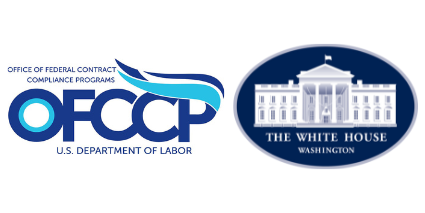
Monday’s White House announcement detailed the completed actions, including:
- OFCCP released guidance for federal contractors and subcontractors to answer questions and share promising practices to clarify federal contractors’ legal obligations. On Tuesday, OFCCP announced an AI landing page containing the new guidance and information about the use of AI in federal contractors’ employment processes. “Irrespective of the level of technical sophistication involved, OFCCP analyzes all decision-making tools for possible adverse impact,” the agency states on the landing page.
- Editor’s Note: Adverse Impact analyses examine only “neutral” and “specific” employment selection policies and/or practices to determine if one or more cause a statistical imbalance that is legally meaningful. A statistical analysis not tracking employment selections/rejections by a specific policy or practice is not an adverse impact analysis. Accordingly, a statistical analysis of only the results of all Applicants vs all Hires, for example, by race, sex, or some other legally protected status is not a proper adverse impact analysis.
It was this very OFCCP confusion about Adverse Impact law that led a unanimous Administrative Review Board (“ARB”) in November 2021 to reverse and remand in its entirety an Administrative Law Judge’s (“ALJ”) Recommended Decision and Order in the OFCCP v. Enterprise Rent-A-Car case. The ALJ had relied on OFCCP’s claimed “adverse impact” analyses which failed to review any Enterprise employment “policies” or “practices,” among other legal misunderstandings of basic Title VII law. The ARB’s Enterprise Rent-A-Car case decision is binding legal precedent on OFCCP.
- On Monday, the Labor Department’s Wage and Hour Division (“WHD”) Administrator Jessica Looman sent a memo to WHD Regional Administrators and District Directors with guidance regarding the application of the Fair Labor Standards Act and other federal labor standards as employers increasingly use AI and other automated technologies in the workplace.
- The Equal Employment Opportunity Commission’s already existing resources that clarify that existing laws apply to the use of AI and other new technologies in employment just as they apply to other employment practices (see here).
Of note in OFCCP’s new guidance. Question 7 states:
“7. What are examples of compliance obligations when a selection procedure using AI has an adverse impact on the basis of race, sex, or ethnicity?
An adverse impact results when the procedure(s) an employer uses to make employment decisions such as hiring, promotion, and termination have a disproportionately large negative effect on a basis that is prohibited by law. [Editor’s Note: OFCCP’s reference to “procedures” is apparently a reference to an employer’s either neutral and specific (a) “policy” or (b) “practice”]. When a selection procedure, including a procedure [again, either a specific and neutral “policy” or “practice”] that uses or relies on AI, has an adverse impact [relating to a legally meaningful statistical disparity] on employment decisions of members of any race, sex, or ethnic group, federal contractors must validate the system using a strategy that meets applicable OFCCP-enforced nondiscrimination laws and the Uniform Guidelines on Employee Selection Procedures (UGESP). [footnote omitted] More specifically, federal contractors must:
- Understand and clearly articulate the business needs that motivate the use of the AI system [Editor’s Note: OFCCP apparently means if the “AI system” in question is a neutral and specific policy or practice which causes a legally meaningful statistical disparity as to one or more Protected Groups…not a collection of policies and or practices comprising a “system”].
- Analyze job-relatedness of the selection procedure [OFCCP apparently means that the employer may go forward with evidence that the at-issue employment policy or practice serves the “legitimate needs” of the employer per the SCOTUS’ holding in Wards Cove Packing Co v. Atonio, 64 490 U.S. 64 (1989).]
- Obtain results of any assessment of system bias, debiasing efforts, and/or any study of system fairness. [Editor’s Note: This is not a “requirement” in adverse impact case decisions].
- Conduct routine independent assessments for bias and/or inequitable results. [Editor’s Note: The UGESPs do not require routine assessments. This appears to be “Best Practices” advice OFCCP has recommended as a purported requirement contractors undertake].
- Explore potentially less discriminatory alternative selection procedures.” [citations omitted] [Editor’s Note: This does not concur with Adverse Impact law. That law is crystal clear that the duty to explore less discriminatory alternative selection procedures is a plaintiff’s/OFCCP’s duty and not the employer’s or federal contractor’s evidentiary responsibility].
Monday, April 29, 2024: U.S. Census Bureau Announced a Second Comment Opportunity Regarding Test Questions on Sexual Orientation & Gender Identity for ACS
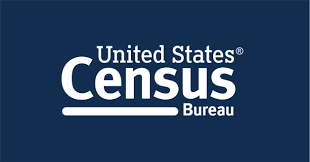
The 30-day Notice references the Bureau’s previous 60-day Notice published on September 19, 2023 (see our story here). The 60-day comment period closed on November 20, 2023.
On April 22, 2024, the Bureau submitted two Supporting Statements to OMB (available for download here). On pages 6-17 of Supporting Statement A, the Bureau summarized and addressed the 91 public comments submitted in response to the 60-day Notice. However, it remains unclear what use of this data the Bureau expects to make of the data it recovers in response to its questions.
We discussed the proposed test questions in detail in our earlier story on the 60-day Notice. Supporting Statement B also details the proposed test questions and their implementation. Based on our review of the 30-day Notice, the two Supporting Statements, and the Bureau’s corresponding May 1, 2024 press release, it does not appear that the Bureau made any substantive changes between the 60-day Notice and the 30-day Notice.
In addition to consideration of the public comments, the Bureau consulted with staff at the following federal agencies about the statistical and methodological approach to the test: Bureau of Justice Statistics, Housing and Urban Development, Energy Information Agency, and the Department of Education. The Census Bureau also relied on discussion and guidance from the Office of Management and Budget and the Federal Committee on Statistical Methodology (FCSM) interagency group: Measuring SOGI Research Group. Statistical organizations outside of the U.S. were also consulted to understand their experience asking SOGI questions in other countries. The Bureau also consulted with several stakeholder organizations in the U.S. (See page 7 of Supporting Statement A).
Tuesday, April 30, 2024: Tenth Circuit Upheld President Biden’s $15 Minimum Wage for Seasonal Recreation Services & Equipment Rental Federal Contractors
Appellate Court Upheld Lower Courts Denial of Preliminary Injunction
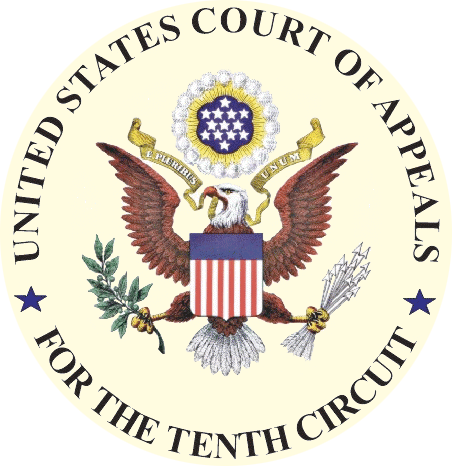
On January 24, 2022, the U.S. District Court for Colorado denied a request by rafting companies that operate on federal lands for an injunction against the minimum wage order. In a 45-page opinion issued Tuesday, the Tenth Circuit panel majority ruled that the district court did not err in concluding that the Federal Property and Administrative Services Act of 1949 (“FPASA”; i.e. the Procurement Act) likely permits the minimum wage requirements at issue because those requirements permissibly regulate the supply of nonpersonal services and advance the statutory objectives of economy and efficiency.
Here, the DOL’s regulations had a “sufficiently close nexus” to the values of economy and efficiency, wrote Judge Jerome A. Holmes in the majority opinion. The Biden Administration argued that the U.S. Department of Labor’s regulations implementing the minimum wage requirements “promotes economy and efficiency” by enhancing worker productivity and generating higher-quality work by boosting workers’ health, morale, and effort; reducing absenteeism and turnover; and lowering supervisory and training costs.
“Thus, even if the [regulations] could plausibly increase costs for the government and the public, enhanced worker productivity and higher quality work—standing alone—are sufficient justifications to invoke FPASA,” Judge Holmes wrote.
In her 19-page dissent, Judge Allison H. Eid argued that the Procurement Act violates the U.S. Constitution’s nondelegation doctrine because it “grants the President nearly unfettered power to create any policy he considers necessary to carry out nonpersonal services under the guise of economy and efficiency.”
How We Got Here
The case involves three EOs and the U.S. Department of Labor’s Wage and Hour Division’s (“WHD”) corresponding regulations. First, President Obama’s EO 13658 of February 12, 2014, established a minimum wage for federal contractors. On October 7, 2014, the WHD published a Final Rule on regulations to implement EO 13658. Second, on May 25, 2018, President Trump issued EO 13838, which carved out an exemption to EO 13658 for recreational services outfitters that operate pursuant to permits on federal lands. However, on April 27, 2021, President Biden revoked that exemption via his EO 14026. On November 24, 2021, the WHD published a Final Rule on regulations to implement EO 14026. (See our story here detailing these three EOs and explaining how to parse which employees are entitled to the higher minimum wage.)
In late September 2023, we reported on the rate increases under the two Final Rules that took effect, with certain exceptions, on January 1, 2024. Those exceptions were due to various court orders in pending challenges which we detailed in the same story. Among those court orders. was the Tenth Circuit’s February 17, 2022, order in the present case temporarily barring the WHD from enforcing the minimum wage requirements as to “contracts or contract-like instruments entered into with the federal government in connection with seasonal recreational services or seasonal recreational equipment rental for the general public on federal lands.” (See our story discussing that ruling here.) That ruling was only a temporary injunction pending the appellate court’s final ruling on the appeal which it issued on Tuesday.
Unless the Tenth Circuit decides to have a majority of its available judges rehear this appeal (known as an “en banc” hearing), the case will now go back to the U.S. District Court for Colorado to assess the merits.
Tuesday, April 30, 2024: OFCCP Acting Director Hodge Discussed Youth Apprenticeship Programs in US DOL Blog
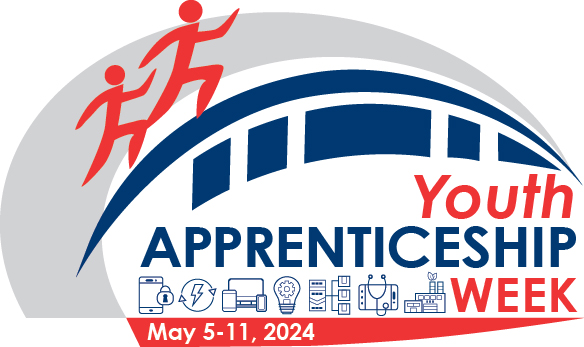
“Youth apprenticeship provides a critical talent pipeline that can help address some of our nation’s pressing workforce challenges,” Acting Director Hodge said. She added, “Registered Apprenticeships provide an opportunity to make good jobs more accessible to populations that have been underrepresented in the workforce, including youth, women, people of color[,] and individuals with disabilities.”
Division Director Mitchell asked Ms. Hodge about best practices federal contractors can implement when launching a youth apprenticeship program. Ms. Hodge responded:
“Several best practices we’ve seen include removing barriers for youth and building networks to connect with youth. Our best practices for fostering diversity and inclusion [include] using apprenticeship programs and youth mentoring programs. Federal contractors with connections to youth organizations, minority serving institutions[,] and HBCUs are instrumental in providing real work experience to apprenticeship program participants, including individuals with disabilities, youth[,] and people of color.”
For more information about best practices and other DOL investments that promote diversity in Registered Apprenticeships, visit the Office of Apprenticeship’s Active Grants and Contracts page on apprenticeship.gov.
Tuesday, April 30, 2024: DE Talk Live | DE&I: Progress Amidst Opposition within Corporate, Political, & Social Spheres
2024 has brought forth many challenges for diversity and inclusion efforts. At DirectEmployers’ recent Annual Meeting & Conference in New Orleans, we addressed those setbacks and emphasized the importance of progress amidst opposition. Tune into this powerful conversation as diversity activist and strategist Torin Ellis and Principal Financial Group’s Chief Inclusion Officer Miriam Lewis spotlight the importance of resilience, knowledge, and tangible progress in the pursuit of creating more inclusive environments within corporate, political, and social spheres.
Listen to DE Talk via any of the options below and subscribe to receive updates whenever a new podcast is available.
Apple • Spotify • YouTube Music (formerly Google Podcast) • Stitcher • iHeartRadio • Stitcher • TuneIn • Overcast • Pocket Casts • Castro • Castbox • Podchaser • RSS Feed
…or your preferred Podcast provider!
Wednesday, May 1, 2024: OSHA Expects to Publish Proposed Rule on National Heat Illness Standard “Later This Year,” Acting Secretary Su Testified Before House EW Committee
Hearing Marked by Several Flashpoints Where GOP Members Sharply Criticized Su
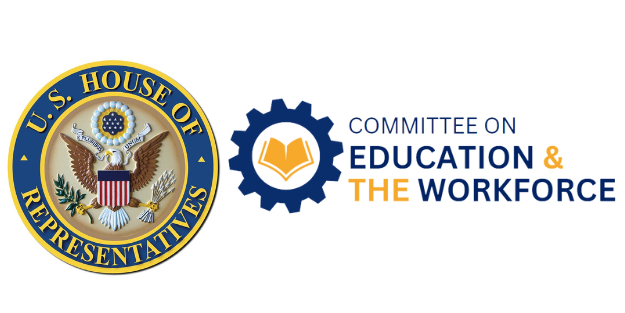
Acting Secretary Su’s prepared remarks on Wednesday were similar to those she made when she testified on April 17 before the House Appropriations Committee’s Subcommittee on Labor, Health and Human Services, and Education (see our story here).
OSHA Heat Standard Proposal
OSHA is still developing a national standard for workplace heat-safety rules. Although the agency published an “Advance Notice of Proposed Rulemaking” (“ANPR”) on October 27, 2021, it has yet to issue a Proposed Rule as to this expected standard. We reported in our story on the Fall 2023 Regulatory Agenda that, per the requirements of the Small Business Regulatory Enforcement Fairness Act (“SBREFA”), OSHA convened a Small Business Advocacy Review (“SBAR”) Panel on August 25, 2023, to gather feedback. In the Fall 2023 Agenda, OSHA set a target date of November 2023 for completing the SBREFA requirements and it planned to complete its analysis of the SBREFA report in January 2024.
About an hour and ten minutes into the hearing, Representative Suzanne Bonamici (D-OR) asked Ms. Su about the status of this anticipated Proposed Rule. When Ms. Su responded that OSHA anticipates publishing a proposed year “later this year,” Representative Bonamici asked if that would happen before the summer heat arrives. Acting Secretary Su responded:
“What people often complain about is how long the rule-making process takes. Part of the reason it takes a long time is that we do have to be thoughtful. We have to engage with all the stakeholders. There’s a lot of pieces to make sure that a rule is thoughtful [and] consistent with our authority and is going to have the impact that we want it to have.”
Flashpoints with Republican Committee Members
C-SPAN’s webpage on the hearing contains clips (on the right-side column) of several continuous exchanges between Republication Committee Members and Acting Secretary Su:
- Congressman Jim Banks (R-IN) grilled Ms. Su on DEI initiatives in apprenticeship programs, repeatedly asking “What are the racist apprenticeship programs [in the United States]?” and asserting that there are “racial quotas” for apprenticeship programs;
- Congressman Bob Good [R-VA] criticized the DOL’s return to in-person work policies and practices;
- Congresswoman Lisa McClain (R-MI) repeatedly asked Acting Secretary Su, “Have you ever owned a business?” In contrast, Congresswoman Jahana Hayes (D-CT) asked Acting Secretary Su “Have you ever been an employee?;”
- Congresswoman Mary Miller (R-IL) asked Acting Secretary Su about migrants and child labor violations; and
- Congressman Kevin Kiley (R-CA) asked Acting Secretary Su, “Do you support classifying independent contractors as employees against their will?” He also called upon Ms. Su to step down from her position as Acting Secretary because there are not enough votes in the Senate to confirm her as Secretary. Ms. Su has been the Acting Secretary of Labor since former Labor Secretary Marty Walsh left the Department of Labor on March 11, 2023.
Wednesday, May 1, 2024: JOLTS Report – Job Openings Decreased by 325k in March, Rate Decreased to 5.1%
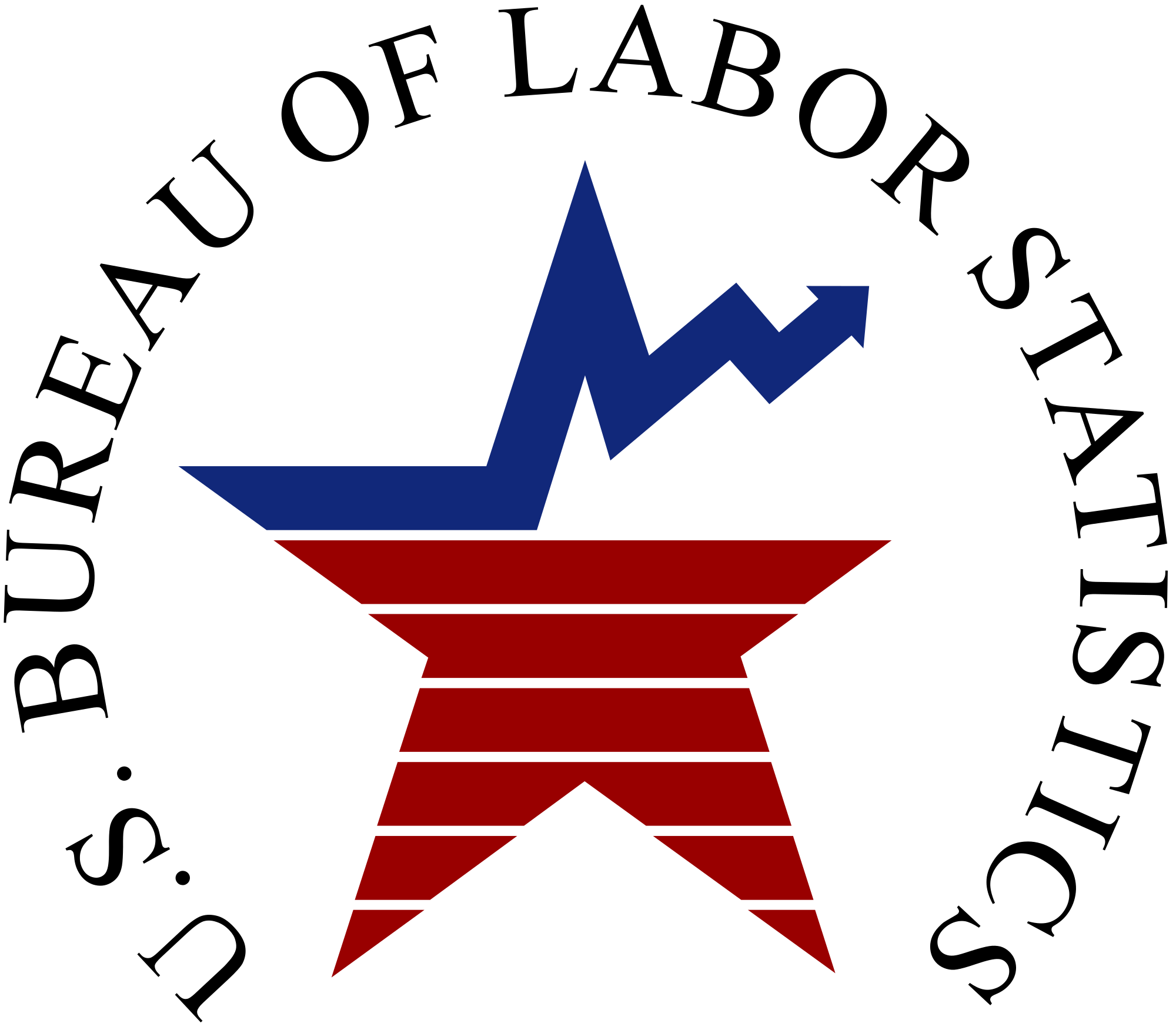
Hires, Layoffs/Discharges & Total Separations & Quits Down; Other Separations Up
The number of hires in March was 5,500,000 compared to the adjusted 5,781,000 number for February (-281,000). The rate decreased to 3.5 percent, compared to the adjusted 3.7 percent rate in February.
Total separations were only 5,200,000 for March, compared to 5,539,000 for February (-339,000). The March rate decreased to 3.3 percent compared to 3.5 percent in February.
Within separations, quits in March were 3,329,000, down from 3,527,000 in February (-198,000) as more employees decided to hold on to their jobs than in previous months. The March rate was 2.1 percent, down slightly from February’s 2.2 percent.
Layoffs and discharges in March were 1,526,000, down from 1,681,000 in February (-155,000). The March rate was 1.0 percent, down a smidge from 1.1 percent in February.
The number of other separations was 345,000 in March, up from 332,000 in February (+13,000). The percentage rate held steady at 0.2.
BLS posted interactive graphs here.
Three-Month Comparison Chart of Job Openings
Our below table reports the number of available jobs (as taken from the revised JOLTS reports) from the last four months of available data.
| Reports | December 2023 | January 2023 | February 2024 | March 2024 |
|
JOLTS available jobs Prior month comparison |
8,889,000 (42,000 < November) |
8,748,000 (141,000 < December) |
8,813,000 (65,000 > January) |
8,488,000 (325,000 < February) |
*November Job Openings were 8,931,000
Note: BLS is scheduled to release the JOLTS Report for April 2024 on Tuesday, June 4, 2024.
Wednesday, May 1, 2024: GAO Found OMB/DOL Did Not Have to Send Memo on Labor Advisors to Congress Before It Could Take Effect
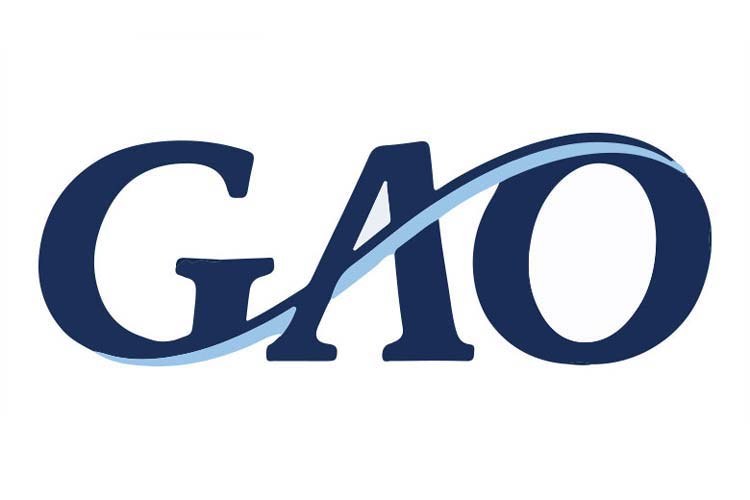
How We Got Here
In January 2023, we reported that the U.S. DOL & White House OMB directed federal agencies to designate “labor advisors” responsible to improve federal contractors’ compliance with labor laws. OMB Director Shalanda D. Young and then Secretary of Labor Martin J. Walsh had issued a joint memo to the heads of executive departments and agencies directing them to designate these labor advisors by February 15, 2023. The memo provided that each of the 24 Chief Financial Officer (CFO) Act agencies must, and other federal agencies were encouraged to, “ensure that one or more labor advisors who are career employees are designated to advise agency officials on Federal contract labor matters.”
In mid-March 2023, House Education and the Workforce Committee Chair Virginia Foxx (R-NC) and Senate HELP Committee Ranking Member Bill Cassidy (R-LA) each issued statements (here and here) about a 3-page letter they sent to Acting Labor Secretary Julie Su and OMB Director Young regarding these labor advisors (see our story here). They asserted that the policy “appears to resurrect unconstitutional policies” contained in the Obama Administration’s failed “Blacklisting” Rule” to sanction federal contractors that the Administration deemed had poor labor and employment law compliance records. On March 27, 2017, then-President Trump signed a CRA joint resolution killing all parts of the “Blacklisting” Rule (see our story here).
Request for GAO Opinion
Section 801(b)(2) of the CRA (5 U.S.C. § 801(b)(2)) provides that where a Rule is disapproved through Congress’ enactment of a joint resolution, it may not be reissued, and a new Rule that is substantially the same as such a Rule may not be issued, unless the reissued or new Rule is specifically authorized by a law enacted after the date of the joint resolution disapproving the original rule. In their March 2023 statements, legislators Foxx and Cassidy also reported that they had sent a letter to the GAO asking for a formal legal opinion as to whether the labor advisors policy violates the “substantially similar” prohibition of the CRA.
Furthermore, they asked the GAO to examine whether the policy meets the definition of a “Rule” under the CRA.
What Did GAO Conclude?
In its opinion, the GAO concluded that: “The Memorandum meets the [Administrative Procedure Act] definition of rule but falls within CRA’s exception for rules relating to agency management or personnel. Therefore, the Memorandum is not subject to CRA’s requirement that a rule be submitted to Congress before it can take effect.” Because GAO concluded that the Memorandum is not a rule for CRA purposes, it did not consider whether the labor advisors’ policy is substantially similar to a Rule for which Congress has enacted a resolution of disapproval.
Friday, May 3, 2024: U.S. Economy Added 175k Jobs in February, Unemployment Rate Held Steady at 3.9%

The labor force participation rate was 62.7 percent for the second month in a row. The employment-population ratio was 60.2 percent, down a smidge from March’s 60.3 percent rate.
The number of short-term unemployed persons was 6,492,000 in April, up by 63,000 from the 6,429,000 figure in March. The number of long-term unemployed (those jobless for 27 weeks or more) was 1,250,000 (19.6 percent of the total unemployed), which was down by 4,000 from March’s figure of 1,246,000 (19.5 percent of the total unemployed).
Major Worker Groups
The BLS/DOL charts below illustrate the numbers by race and ethnicity (data for some groups not seasonally adjusted):
Our table below compares the major worker groups’ numbers from the last three months of available data:
|
The Employment Situation – April 2024 |
||||
| Unemployment Rate |
February 2024 |
March 2024 |
April 2024 | Feb 2020 Pre-Pandemic |
| National (Seasonally adjusted) |
3.9% | 3.8% | 3.9% | 3.5% |
| White | 3.4% | 3.4% | 3.5% | 3.0% |
| Black | 5.6% | 6.4% | 5.6% | 6.0% |
| Asian | 3.4% | 2.5% | 2.8% | 2.5% |
| Hispanic (Seasonally adjusted) |
5.0% | 4.5% | 4.8% | 4.4% |
| Native Hawaiians & Other Pacific Islanders | 6.3% | 4.5% | 6.5% | 2.7% |
| Two or More Races (Not seasonally adjusted) |
8.5% | 7.5% | 6.4% | 6.1% |
| Men (20+) | 3.5% | 3.3% | 3.6% | 3.2% |
| Women (20+) (Seasonally adjusted) |
3.5% | 3.6% | 3.5% | 3.1% |
| Veteran (Not seasonally adjusted) |
2.9% | 3.0% | 3.1% | 3.7% |
| Individuals with Disabilities (Not seasonally adjusted) |
7.7% | 8.6% | 6.3% | 7.8% |
See Also:
- BLS has additional, interactive graphs available here
- President Biden’s remarks
- Acting Secretary of Labor Julie Su’s statement
- USDOL video short illustrating the report
- White House Counsel of Economic Advisers’ blog
In Brief
Tuesday, April 30, 2024: 2023 EEO-1 Component 1 Reporting Opened

Tuesday, April 30, 2024: Federal Trade Commission Will Officially Publish Final Rule Preventing Most Worker Non-Compete Agreements on May 7, 2024
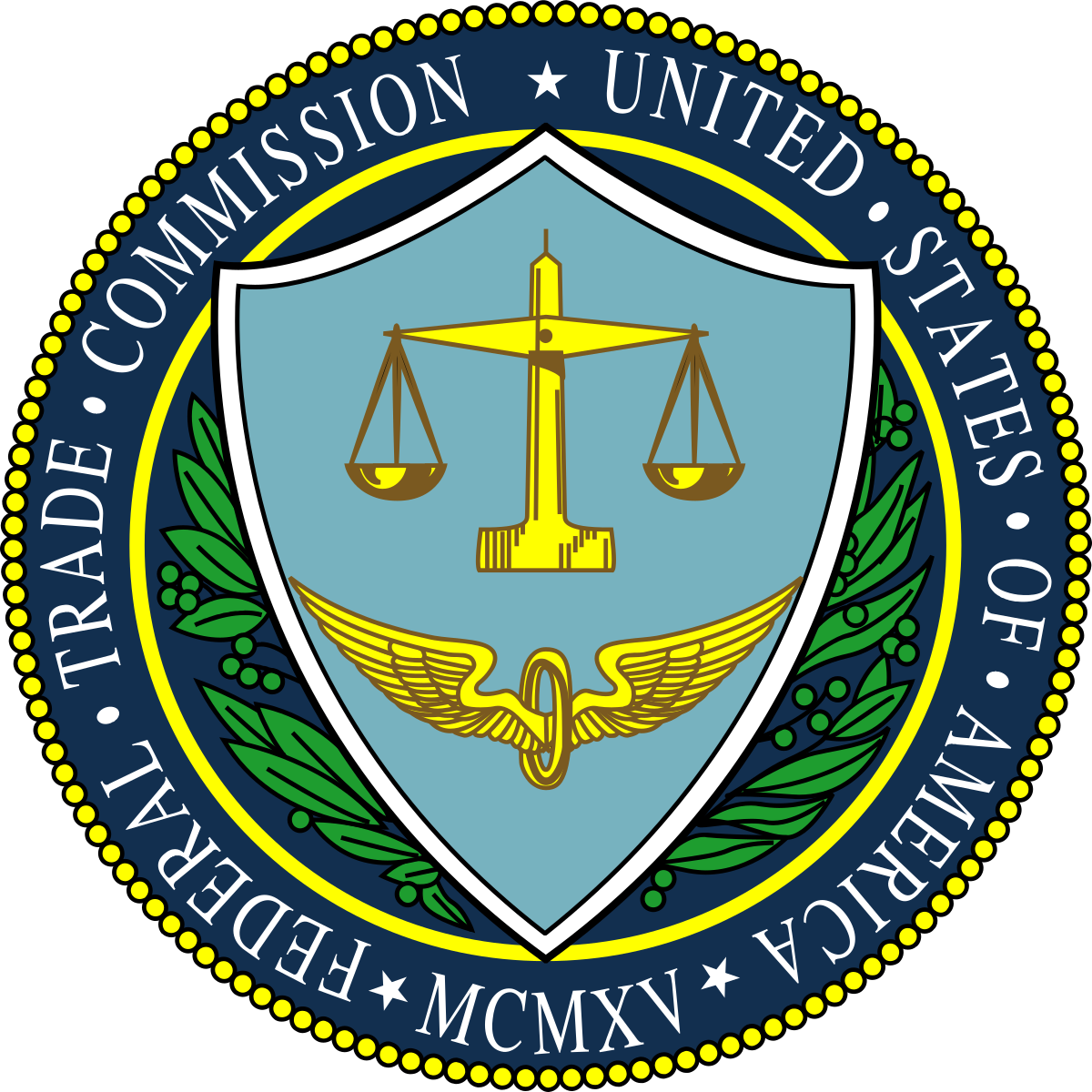
Also, on Thursday, the FTC announced it will host a free, online webinar on May 14, 2024, at 11 a.m. ET to provide an overview of the Final Rule. A link to the webinar will be available on the day of the event, shortly before the start time. The webinar will be recorded, and will be available on the Commission’s website after the meeting.
Friday, May 3, 2024: President Biden Vetoed Congressional Resolution That Would Have Nullified NLRB’s Joint Employer Final Rule
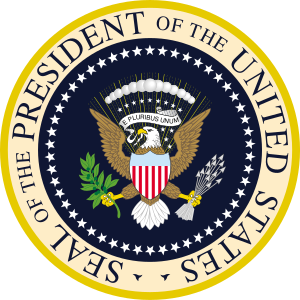
The Final Rule was scheduled to take effect nationwide on February 26, 2024 (see our story here). However, in March, U.S. District Judge J. Campbell Barker of the Eastern District of Texas (in Tyler) struck down the Rule (our story is here). The NLRB has not yet announced its plans regarding that ruling.
Looking Ahead:
Upcoming Date Reminders
We added three NEW items to our calendar this week:
November 2023: EEOC’s target date (now overdue) to publish its NPRM to amend its regulations on exemptions to certain recordkeeping and reporting requirements (RIN: 3046-AB28)
December 2023: U.S. OSHA’s current target date (now overdue) to publish its Final Rule on Occupational Exposure to COVID-19 in Healthcare Settings (RIN: 1218-AD36); On February 9, 2024, OSHA submitted its Final Rule to OMB for review and approval
March 11, 2024: Previous effective date of NLRB’s Final Rule on Standard for Determining Joint-Employer Status under the NLRA (per U.S. District Judge’s order; original February 26, 2024, effective date extended); On March 8, 2024, a U.S. District Judge vacated this Final Rule – stay tuned for further developments
March 2024: EEOC’s (now overdue) target date for proposal to amend its regulations regarding the electronic posting of the “Know Your Rights” Poster (RIN: 3046-AB29)
March 2024: U.S. NLRB’s (now overdue) target date for its Final Election Protection Rule (RIN: 3142-AA22)
May 13, 2024: Deadline for comments on US DOL’s Request for Information seeking public input on whether to revise the list of Schedule A job classifications that do not require permanent labor certifications to include occupations in Science, Technology, Engineering & Mathematics (“STEM”) & other non-STEM occupations; previous February 20, 2024 deadline extended
NEW May 14, 2024 (11 am ET): Federal Trade Commission webinar on its Final Rule banning most non-compete agreements
May 15, 2024 (11:00 – 5:30 EST): US DOL WHD online seminar on prevailing wage requirements for federally-funded construction projects; register here
NEW May 30, 2024: New deadline for comments on the Census Bureau’s Proposal to Test Questions on Sexual Orientation & Gender Identity for the American Community Survey
May 2024: FAR Council’s target date for its Final Rule to Prohibit TikTok [or any successor application or service developed or provided by ByteDance Limited] on Federal Government Contractor Devices (RIN: 9000-AO58); the Interim Rule is here
June 4, 2024: Deadline for 2023 EEO-1 Survey Component 1 Data Collection
June 6, 2024 (11:00 – 11:45 am CDT): OFCCP webinar for federal contractors on its pre-complaint inquiry process for workers
June 18, 2024: EEOC’s Final Rule to Implement the Pregnant Workers Fairness Act takes effect
July 1, 2024: OFCCP’s asserted “deadline” for covered federal Supply and Service contractors & subcontractors to certify, via OFCCP’s online Contractor Portal, that they have developed & maintained Affirmative Action Programs for each establishment or functional unit
July 1, 2024: First effective date for US DOL WHD’s Final Rule on Defining and Delimiting the Exemptions for Executive, Administrative, Professional, Outside Sales, and Computer Employees (Overtime Rule); the standard salary level necessary for exemption – i.e., eligible for overtime pay – will increase from $35,568/year to $43,888/year and the highly compensated employee threshold will increase from the current $107,432/year to $132,964/year
August 29, 2024 (11:00 – 5:30 EST): US DOL WHD online seminar on prevailing wage requirements for federally-funded construction projects; register here
NEW September 4, 2024: Scheduled effective date for Federal Trade Commission Final Rule banning most non-compete agreements
September 2024: OFCCP’s current target date for its Notice of Proposed Rulemaking to “Modernize” Supply & Service Contractor Regulations (RIN: 1250-AA13)
September 2024: OFCCP’s current target date for its Final Rule on “Technical Amendments” to Update Jurisdictional Thresholds & Remove Gender Assumptive Pronouns (RIN: 1250-AA16)
September 2024: EEOC’s anticipated date for amending its FOIA procedures to add fees for electronic disclosure of records (RIN: 3046-AB20)
September 2024: U.S. DOL WHD’s target date to publish an NPRM on “Employment of Workers With Disabilities Under Special Certificates” (Subminimum Wage Rule) (RIN: 1235-AA14)
January 1, 2025: Second effective date for US DOL WHD’s Final Rule on Defining and Delimiting the Exemptions for Executive, Administrative, Professional, Outside Sales, and Computer Employees (Overtime Rule); the standard salary level necessary for exemption – i.e., eligible for overtime pay – will increase from $43,888/year to $58,656/year and the highly compensated employee threshold will increase from $132,964/year to $151,164/year
May 21 – May 23, 2025: DEAMcon25 in Scottsdale, Arizona
THIS COLUMN IS MEANT TO ASSIST IN A GENERAL UNDERSTANDING OF THE CURRENT LAW AND PRACTICE RELATING TO OFCCP. IT IS NOT TO BE REGARDED AS LEGAL ADVICE. COMPANIES OR INDIVIDUALS WITH PARTICULAR QUESTIONS SHOULD SEEK ADVICE OF COUNSEL.
SUBSCRIBE.
Subscribe to receive alerts, news and updates on all things related to OFCCP compliance as it applies to federal contractors.
OFCCP Compliance Text Alerts
Get OFCCP compliance alerts on your cell phone. Text the word compliance to 18668693326 and confirm your subscription. Provider message and data rates may apply.


